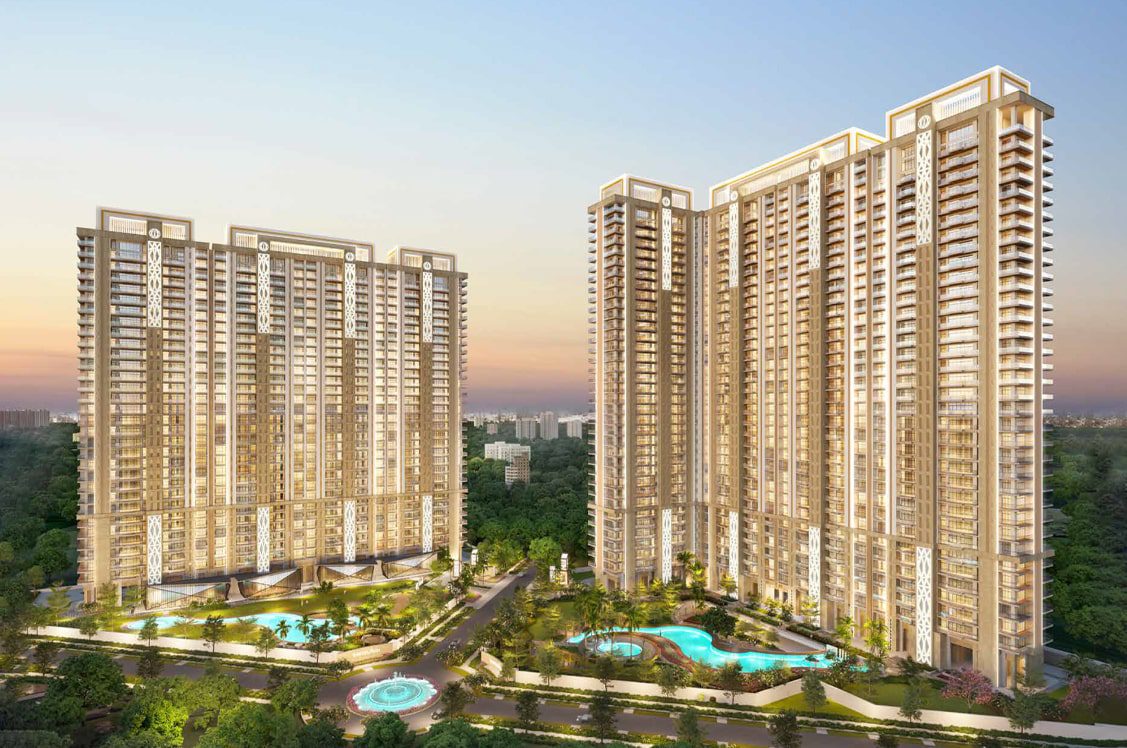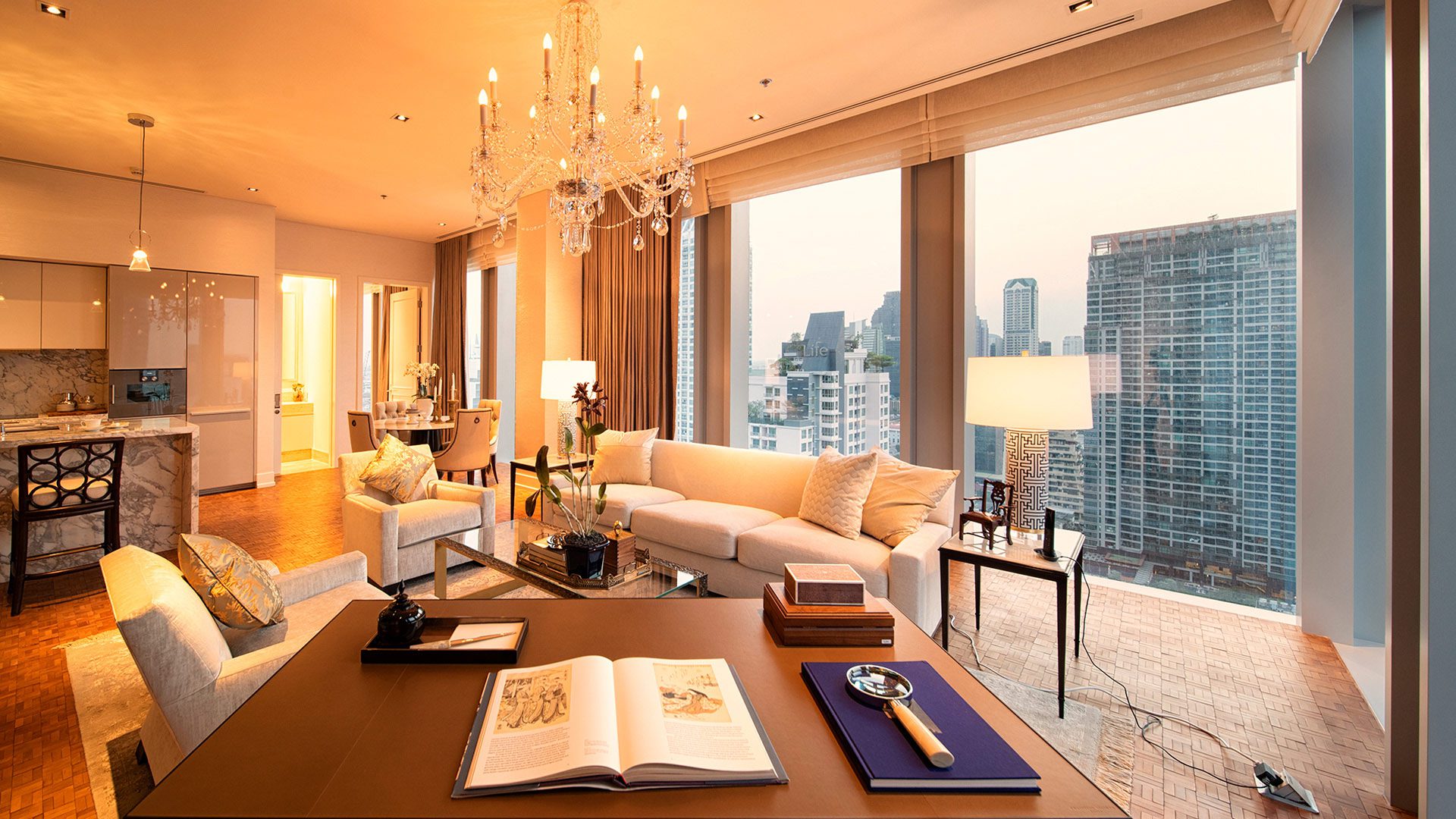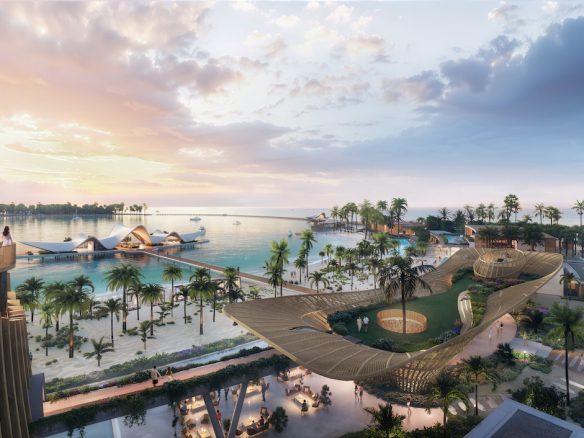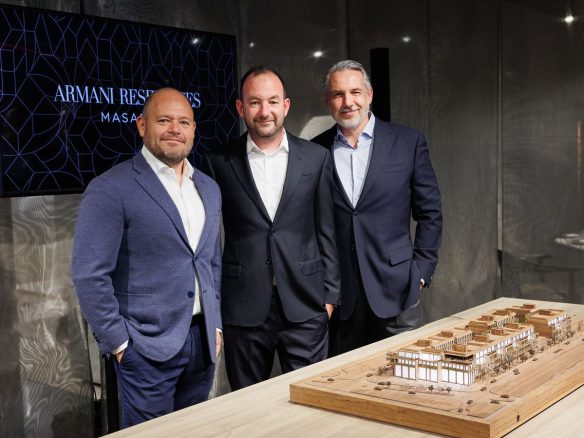Asia’s luxury residences market, especially hotel branded projects (branded residences) has exploded in recent years. According to Savills, the market share of branded real estate development is gradually shifting to Asia Pacific where the number of branded residences is expected to increase by 180% over the forecast period until 2031.
Cities like Bangkok, Manila, Hanoi and have become hotbeds for these developments, while more established luxury markets such as Hong Kong and Tokyo are beginning to see greater interest in the sector. (Edited and updated 3 Sept 2025)
The Asia branded residences market has soared to a record USD 30.7 billion, according to C9 Hotelworks’ Asia Branded Residences Market Review.
With 67,353 units across 283 projects, the sector’s active and upcoming developments highlight a mature yet fast growing market, drawing significant investor interest.
This growth is outpacing the wider Americas region by 20 to 40 percentage points, with the Americas accounting for more than 50% of branded residences globally until 2015.
Branded Residences in the Asian Context
The branded residences market in the Asia Pacific (APAC) is projected to grow by 180% by 2031, with Southeast Asia driving significant expansion.
Vietnam, Thailand, and India rank among the global top ten for branded residence growth, collectively projected to achieve nearly 200% expansion by 2031, positioning the Asia Pacific region to potentially rival North America over the next 10–12 years, despite increasing competition from the Middle East and Africa.
From 2018 to 2020, Asia Pacific accounted for nearly a quarter of global branded residences but has since lost market share to the Middle East, Africa, and, to a lesser extent, Europe. However, markets like Japan, South Korea, and Australia show promise for regaining ground. Meanwhile, Indonesia and Malaysia have seen stagnant growth compared to their historical contributions, but renewed momentum in these markets could further strengthen the region’s outlook.
The region’s potential is fuelled by its rapid wealth growth, forecasted to outpace all other regions globally. Competing with North America, Asia’s rising wealth signals a significant shift in financial influence. Singapore, Japan, and Australia, among the top ten countries for wealth inflow, are well-positioned for further branded residence development, with Singapore and Japan being especially attractive to Asian nationals.
While the concept of branded residences originated in the West, it was enthusiastically embraced and adapted in Asia with Amanpuri in Phuket Thailand being Asia’s first brand residence launching way back in 1988 which appealed to wealthy property investors from Bangkok and around the globe who wanted a hotel style living experience.

In many Asian markets, these properties represent more than just luxury residences; they are aspirations of social status and financial success.
In Asia, branded residences often take on distinctive characteristics that set them apart from their Western counterparts. The residences are part of larger complexes that include shopping malls, offices, and hotels, reflecting the region’s preference for integrated urban living.
For example The Ritz-Carlton Residences Bangkok are located in the Mahanakorn Tower which consists of 77 floors of restaurants, tourist attractions, restaurants and bars as well as a hotel.

The rapid growth of branded residences in Asia is closely tied to the region’s economic development. As wealth has accumulated, particularly among the nouveau riche in countries like China and India, the demand for luxury properties that offer prestige and world-class amenities has soared.
Moreover, in many Asian cities where space is at a premium, branded residences offer an attractive solution, providing a sense of exclusivity and a range of services within a single property.
An important fact, is that many Asian property purchasers whilst they are buying in their own countries, are also purchasing luxury residences overseas for investment and vacation homes.
Take Four Seasons Bangkok, the project was initially launched in Singapore and sold 40% of the units, before it was marketed and available to purchase in Bangkok.
Read our branded residences guide 2025
Key Markets in Asia
The branded residence trend has taken hold across various Asian markets, each with its own unique characteristics:
China:
China has seen a surge in branded residences, particularly in first-tier cities like Shanghai, Beijing, and Shenzhen. The country’s growing middle class and expanding cohort of high-net-worth individuals have fuelled demand for these prestigious properties.
Thailand:
Bangkok has emerged as a global hotspot for branded residences, with numerous projects in development or recently completed. It has a portfolio of luxury residences that can match any city in the world, it can boast having almost every elite hotel brand that offers luxury branded residences.
Thailand currently leads in numbers of completed projects across Asia, capturing an impressive 23.3% share of the market in 2024, and whilst it is has competition from Vietnam.
With continued new development in Bangkok and the emergence Phuket as a branded residences hotspot, Thailand is expected to remain a leading country in branded real estate.
Indonesia:
Jakarta, with its rapidly growing economy and urbanising population, has become a key market for branded residences. These developments often appeal to the country’s emerging affluent class seeking prestigious urban living options. Property developers Bali continue to explore branded real estate, and we see huge potential for growth.
Branded residences first appeared in Bali during the 1990s, with Aman setting a standard through its Aman Villas at Nusa Dua. The early 2000s saw further growth from prominent brands like Banyan Tree, Bvlgari, and Karma, especially in areas such as Jimbaran, the Bukit Peninsula, and Nusa Dua.
Although branded residences make up only 15% of hospitality-managed real estate, investor interest is growing. Buyers are increasingly drawn to projects offering professional management, structured operational standards, and the prestige of international hotel brands, particularly as regulations tighten and demand for quality assurance rises.
Singapore:
Despite its small size, Singapore has attracted several high-profile branded residence projects including St.Regis Residences Singapore. The city-state’s reputation as a global financial hub and its high concentration of wealthy individuals make it an attractive market for luxury branded properties.The most recent branded residences development to be launched in Singapore is W Residences Marina View.
Experience luxury living at W Residences, a stunning development featuring 683 units in the highly sought-after District 1. With unparalleled connectivity, the condominium is just steps away from Shenton Way MRT station and minutes from the CBD and Orchard Road. Indulge in world-class amenities, including a 50m lap pool, fully-equipped gym, and lush landscaping. Situated in a prime location, W Residences is surrounded by top schools, serene parks, and trendy shopping malls, offering residents the ultimate urban lifestyle.

Vietnam:
Cities like Ho Chi Minh City and Hanoi are seeing increased interest in branded residences, reflecting Vietnam’s fast-growing economy and expanding upper-middle class. Masterise Homes are Vietnam’s biggest developer of luxury residences have recently completed The Ritz Carlton Hanoi and are also building one of the biggest Marriott and JW Marriot complexes in the world.
Vietnam is forecasted and on track to be the leading country in the Asian region, and currently leads with the largest pipeline, featuring 18,197 units across 61 projects, with 66% located in resort destinations such as Da Nang and Hoi An.
Japan:
In Japan, several international and local brands have entered this market, particularly in major cities like Tokyo and Osaka. Aman Residences Tokyo is the groups first standalone branded residence.
While branded residences have surged across Asia’s real estate markets, Japan has been slow to embrace this global trend. Why the delayed adoption, and what is the current landscape?
Japan’s domestic market has long shown strong demand for leisure properties, particularly in the timeshare and vacation ownership sectors.
Unlike Thailand, Vietnam, and Indonesia, where full-ownership vacation homes thrive, Japanese developers have been cautious, hesitant to adopt branded residences due to a lack of proven success in their domestic market.
However we are beginning to see green shoots of interest, with a number of high profile projects in development or in pipeline, with estimates ranging from 8-16 projects comprising 1100- 2100 units.

Philippines:
Manila has become a significant market for branded residences, with several major projects launched in recent years, appealing to both local elites and overseas investors. The branded residences market in the Philippines is predominantly centered in Metro Manila, with 4,477 units across 12 projects. Luxury condominiums dominate Metro Manila’s market, comprising 57% of the city’s supply. Nationwide, urban destinations account for 56% of the branded residence pipeline.
Cambodia:
Branded residences in Cambodia are a relatively newer concept compared to more established luxury real estate markets, but they’re gaining traction, particularly in Phnom Penh.
Malaysia
Malaysia’s branded residence market is primarily concentrated in urban hubs such as Kuala Lumpur and Penang, with a total of 5,543 units. Condominiums account for 95% of the development pipeline, while the remaining 5% consists primarily of luxury villa projects in coastal regions like Johor and Sabah.
India

India’s branded residences market encompasses 3,795 units, all located in urban areas, with Gurugram (42%), Mumbai (24%), and Pune (11%) dominating the supply.
The market largely consists of mid- to large-scale condominium projects integrated with hotels. India’s growth potential is substantial, driven by increasing wealth, strong demand for luxury properties, and a rising preference for branded developments offering professional management and global brand prestige, making it a key emerging market in the Asia Pacific region.
Branded Residences in Asia
The rise of branded residences in Asia (as it is globally) reflects the region’s economic dynamism, changing consumer preferences, and evolving urban landscapes.
The branded residences market in Asia, valued at USD 30.7 billion, encompasses 38,893 units across 178 projects currently available for sale. Thailand holds the largest share at 18%, followed by the Philippines at 12% and South Korea at 11%. A future pipeline of 28,460 units across 105 projects awaits release, with Vietnam comprising 41% of this supply. The market has grown at a 10% compound annual growth rate from 2021 to 2025.
Hotel-co-located branded residences dominate, accounting for 57% of the active pipeline, while mixed-use developments and standalone residences represent 24% and 19%, respectively. Urban centers like Bangkok, Kuala Lumpur, and Manila make up 53% of the active pipeline, with resort destinations such as Phuket, Pattaya, and Da Nang covering the remaining 47%.
Emerging markets include India (8%) and Vietnam (7%) by market value. Bangkok leads urban areas with 4,525 units across 15 projects, 74% of which are upscale to luxury. Phuket dominates resort destinations with 3,201 units across 24 projects, blending small-scale luxury villas and large-scale resort-style condominiums.
High-net-worth buyers increasingly target rare, iconic, and design-focused properties, such as oceanfront estates or architecturally unique homes, viewing them as trophy assets
While challenges exist, the sector’s ability to adapt to local contexts while offering global standards of luxury suggests that branded residences will continue to play a significant role in Asia’s high-end luxury residences real estate market for years to come.
2025 data C9 hotelworks – Savills Asia Pacific Branded Residences Report 2025
.

BRESI is the world’s first platform dedicated exclusively to branded residences and branded residence news. Our goal is to highlight the best branded real estate for sale around the globe, and to provide insight and news from the sector
DISCLAIMER: All information in this article is for information purposes only. For more detailed information please visit the links cited in the article. BRESI claims no copyright to any of the images.




